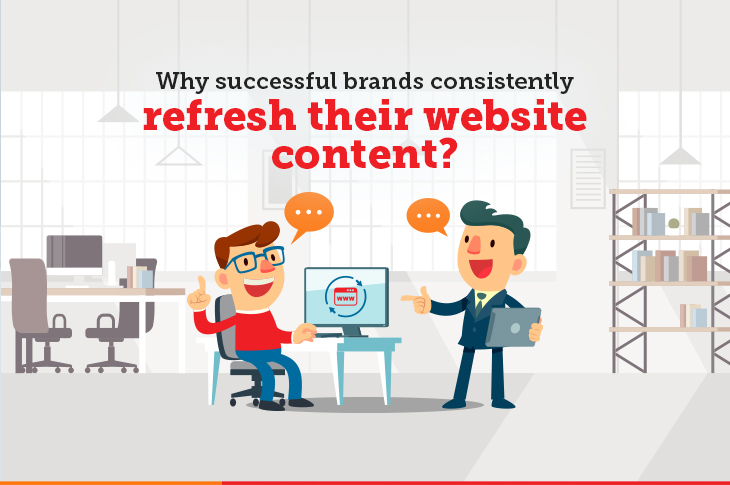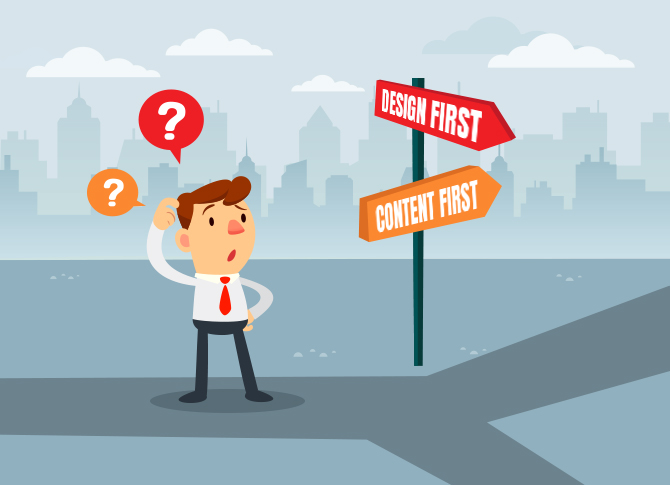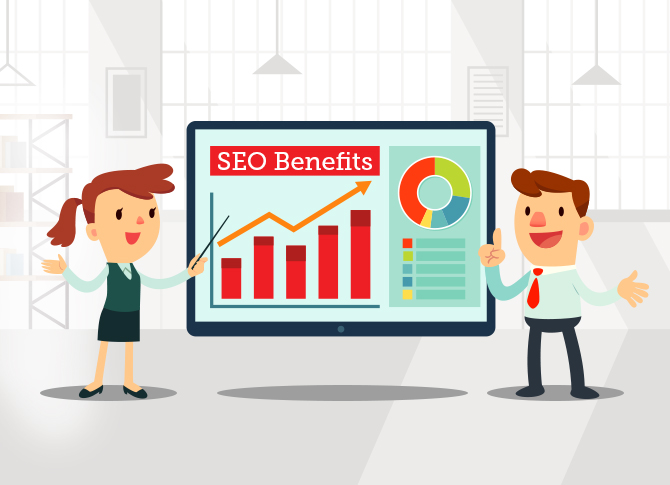Website Content : From Website Woes to Website Wows

Fill it, shut it, forget it. That was the tagline of the erstwhile Hero Honda CD 100 advertising campaign in the 1980s. For the uninitiated, this campaign positioned Hero Honda as the most fuel-efficient bike and took the market by storm. The proposition was simple – fill fuel once and ride many miles on the same tankful. Why am I writing about a bike campaign from the 1980s in a content marketing piece that’s about refreshing your website with content regularly? Because I see most organizations and marketers use this tagline as their only action point when it comes to their brand website.
Time to change
Picture this: The C–suite of the company decides it is time to ‘change’ the website, and a flurry of activity begins. Advertising agencies, UI/UX experts, content marketing agencies, web hosting and tech companies are all brought to the party. Everyone from the CEO to the organization’s intern is working on this website, and a million iterations happen because everyone who’s anyone has an opinion on how the website should look, function, and read. There’s a mad buzz, an impossible timeline, and several blood vessels burst before the powers that be finally think they’ve cracked it.
With much fanfare and at least thirty – if not sixty or ninety – days after the first ‘go-live date’, the new website is launched. The very next day, all is forgotten, and new, urgent work consumes the entire organization. The once shiny, new website fades into obscurity and rests in peace, awaiting a resurrection. A resurrection that happens 3 to 5 years later because it ‘has to be done’ or because the organization has hired a new CMO, CDO, Digital Transformation Officer, or some such non-website reason. Sounds familiar?
Advanced marketers who keep pace with their consumers ensure their website platform, UI/UX, and content are constantly updated. In this article, I’m going to focus on the content aspect of your website and make a case for why this is an essential content marketing activity in which you should continuously invest time and money. I’m going to assume you are planning a new website and these are my suggestions:

Content–led design or design-led content
Most marketers are at sea with content and have many parallel conversations with several stakeholders to get a new website up and running. I suggest the marketing and management team align on which of these two routes to take. It’s not like one route is better than the other, and more often than not, it’s likely to be different depending on the product or service category you’re in.
I often see marketing teams constantly retrofitting design into content and content into design, eventually making a mishmash of the entire process. For better customer experience, successful content marketing, and more engagement, you must make this choice well before you roll out those briefs to potential external partners. All internal teams need to align with this overall ethos and drive the effort accordingly. This really should be the first line of the approach note for the newly planned digital experience.
Journey with your customers
Once you launch your new or recently refurbished website, you will begin to understand how users are reacting to the content. You learn of high traffic and high engagement areas. You sit on rich data, such as information about areas that are red–hot zones where your customers drop off or disengage.
This is where good content marketing plays a role. Let’s face it. You want leads, more business, test drives, ticket sales, or at least better engagement. Content marketing works best when you are sensitive to your customers’ needs, and when you drive them down the purchase funnel. This is continuous work in progress because the truth is the customer is always asking questions and your brand website has a wonderful opportunity to be the answer.

Test, test, and test some more
Which brings me to my next point. A website is AB testing in perpetuity. Work and rework those headlines, body copies, FAQs, etc. continuously. We live in a world of multiple consumer personas and multiple consumer journeys. These visitors land on your website through a range of traffic sources and react to your content accordingly.
Your content marketing goal for the website should be to make sure you get the next click until your business objective is met. You’re probably AB testing digital creatives, social posts, and other digital marketing initiatives. Why should your website be left out of this golden opportunity?
Create lots of content and then some
Many brands witness website update opportunities in new products or variants, tactical marketing campaigns, announcements, etc. Unfortunately, the website has no or a mere passing mention, hidden rather deep inside its many pages. You’re not leveraging the content marketing real estate your website offers you. If successful, the brand website can reduce your reliance on paid media and result in real cost savings. These opportunities allow for creating powerful above the fold or first–scroll content where users choose to either go ahead and consume content or just bounce.
To blog or not to blog
Blogs are the best way to keep your website constantly updated. But that’s easier said than done. In most cases, blogs are something marketing teams begin in right earnest, but the novelty wears off fast and the blog sinks into oblivion. Some will argue that no one reads blogs.
Well, if I’m interested in buying a house or a car, let me assure you I will read several blogs. If I’m planning a holiday, planning to start running, thinking of growing my money though investments, etc., I’m more likely to consume loads of content in the form of blogs. And when I’m off the blog, after buying my house or car, you can be sure that there will be several more like me before I made those purchases, and the blog will be just as exciting for them.
In many cases, a blog is a content marketing hub and yet underutilized. HubSpot recommends 3 to 5 blogs a week and suggests “making blogging a serious day to day activity is hard work, but rewarding in that you may garner visits and leads.”
Update to stay relevant
Regularly updating your website content helps you get discovered by search engines. The SEO benefits of updating content accrue to you because you give search engines a reason to crawl your website more often. While this means you need to publish content regularly, it also helps when you revisit old content and touch it up to make it more relevant and up to date. The more your page is search–optimized, the less you will need to spend on search marketing.
Content marketing is a discipline. It takes time, dedication, and perseverance to make content marketing deliver business results. It’s just like trying to build a great body or making your money grow through investments. The results for these do not happen overnight. It happens because you keep at it and are so committed that you don’t let the ball drop. Just as compounding plays a role in making investments grow over time, content marketing ensures long–term success for marketers and their organizations. Keep pushing the content marketing envelope by making sure your website is always a work in progress, and you’ll see this investment and effort will pay off handsomely.
This was originally published on Exchange4Media

